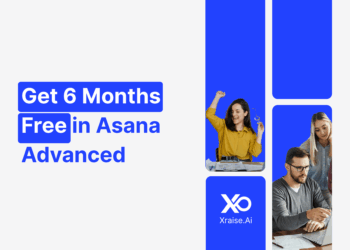In the fast-paced world of startups, establishing a strong online presence quickly and efficiently is crucial. With limited resources and time, founders often seek tools that can help them build, launch, and scale their websites without extensive technical expertise. Webflow has emerged as a popular contender in the no-code website builder space, promising flexibility and design freedom. But is Webflow the right choice for your startup? This article delves into the features, advantages, and potential drawbacks of using Webflow, helping you make an informed decision.
What is Webflow?
Webflow is a web design and development platform that allows users to create responsive websites without writing code. It combines the visual design capabilities of tools like Adobe Photoshop with the functionality of traditional web development platforms. Webflow offers a drag-and-drop interface, customizable templates, and a robust CMS (Content Management System), making it a versatile tool for businesses of all sizes.
Key Features of Webflow for Startups
1. Visual Design Flexibility
Webflow’s visual editor provides granular control over the design elements of a website. Startups can create unique, visually appealing websites that reflect their brand identity without relying heavily on pre-made templates.
2. Responsive Design
With the increasing use of mobile devices, having a responsive website is non-negotiable. Webflow ensures that websites look and function seamlessly across various screen sizes and devices.
3. Content Management System (CMS)
Webflow’s CMS allows startups to manage and update their website content easily. Whether it’s blog posts, product listings, or portfolio items, the CMS is user-friendly and customizable.
4. E-commerce Capabilities
For startups looking to sell products or services online, Webflow offers e-commerce functionality. Users can set up online stores, manage inventory, and handle transactions without needing third-party integrations.
5. SEO Tools
Webflow includes built-in SEO tools that help optimize websites for search engines. Features like customizable meta tags, clean code, and fast loading speeds contribute to better search engine rankings.
6. Hosting and Security
Webflow provides reliable hosting services with high uptime, fast load times, and robust security measures, including SSL certificates, ensuring that your website remains secure and accessible.
7. Integrations and Extensibility
Webflow integrates with various third-party tools and services, such as Google Analytics, Zapier, and Mailchimp, allowing startups to extend the functionality of their websites as needed.

Pros of Using Webflow for Startups
1. No-Code Development
One of Webflow’s standout features is its no-code approach, enabling founders and team members without technical backgrounds to build and maintain websites. This reduces reliance on developers and can speed up the website development process.
2. Design Customization
Webflow offers unparalleled design flexibility compared to many other website builders. Startups can create bespoke designs that align perfectly with their brand, avoiding the cookie-cutter look often associated with template-based platforms.
3. Scalability
As startups grow, their website needs may evolve. Webflow’s scalable infrastructure supports increasing traffic, more complex functionalities, and additional content without significant overhauls.
4. Integrated CMS
Managing content becomes straightforward with Webflow’s CMS. Startups can empower their team members to update content without affecting the overall design or functionality of the site.
5. Speed of Deployment
Webflow allows for rapid website development and deployment. With its intuitive interface and pre-built components, startups can get their websites up and running in a fraction of the time compared to traditional development methods.
6. Cost-Effective
For startups with tight budgets, Webflow offers various pricing tiers, including a free plan for basic websites. This flexibility allows startups to choose a plan that fits their financial constraints while still accessing essential features.
Cons of Using Webflow for Startups
1. Learning Curve
Despite being a no-code platform, Webflow has a steeper learning curve compared to other website builders like Wix or Squarespace. Users need to invest time in understanding the interface and capabilities to fully leverage the platform.
2. Cost at Scale
While Webflow is cost-effective for small to medium-sized websites, the pricing can become expensive as the number of projects, CMS items, or e-commerce functionalities increases. Startups with extensive needs may find the costs add up quickly.
3. Limited Plugin Ecosystem
Compared to platforms like WordPress, Webflow has a more limited selection of plugins and third-party extensions. This can restrict functionality for startups needing specialized features or integrations.
4. Dependence on Webflow Hosting
Webflow’s hosting is tightly integrated with its platform, which can be a limitation for startups looking to migrate their websites to other hosting providers in the future. This dependency can pose challenges if the startup decides to switch platforms down the line.
5. E-commerce Limitations
While Webflow offers e-commerce capabilities, it may not be as robust as dedicated platforms like Shopify or WooCommerce. Startups with complex e-commerce needs might find Webflow’s offerings insufficient.
Comparing Webflow with Alternatives
Webflow vs. WordPress
- Ease of Use: Webflow offers a more intuitive, drag-and-drop interface, whereas WordPress can be more complex, especially for non-developers.
- Design Flexibility: Webflow provides greater design customization without needing to code, while WordPress relies on themes and plugins for design.
- Maintenance: WordPress requires regular updates and security management, whereas Webflow handles hosting and security automatically.
Webflow vs. Wix/Squarespace
- Design Capabilities: Webflow surpasses Wix and Squarespace in terms of design flexibility and customization.
- Scalability: Webflow is better suited for scaling websites as startups grow, whereas Wix and Squarespace may become limiting for larger, more complex sites.
- Cost: Wix and Squarespace generally offer lower entry-level pricing, but Webflow provides more value for money as the website’s complexity increases.
Webflow vs. Shopify
- E-commerce Features: Shopify is specialized for e-commerce, offering more advanced features and integrations compared to Webflow.
- Design vs. Functionality: Webflow excels in design flexibility, while Shopify provides a more robust set of tools for online stores.
Considerations for Startups
When deciding whether Webflow is the right choice for your startup, consider the following factors:
1. Technical Expertise
If your team lacks technical skills but desires a highly customized website, Webflow’s no-code platform can be a valuable asset. However, be prepared to invest time in learning the tool.
2. Budget Constraints
Evaluate your budget against Webflow’s pricing tiers. For startups just starting out, the free plan or lower-tier subscriptions may suffice. However, assess the long-term costs as your website needs grow.
3. Website Complexity
Consider the complexity of your website. For straightforward sites, Webflow is ideal. For more intricate functionalities, especially in e-commerce, you might need to explore additional solutions or platforms.
4. Scalability and Growth
Think about your startup’s growth trajectory. Webflow supports scalability, but ensure it aligns with your future needs, especially regarding traffic, content management, and integrations.
5. Design Requirements
If a unique, branded website is crucial for your startup’s identity, Webflow offers the design flexibility to achieve this without compromising on functionality.
6. Time to Market
Startups often operate under tight timelines. Webflow’s rapid deployment capabilities can help you launch your website quickly, giving you an edge in the competitive market.
7. Integration Needs
Assess the tools and services your startup relies on. Webflow’s integration capabilities are robust but limited compared to some other platforms. Ensure it can seamlessly connect with your existing tech stack.
Bottom Line: Is Webflow Right for Your Startup?
Webflow presents a compelling option for startups seeking a flexible, no-code platform to build and manage their websites. Its design capabilities, responsive features, and integrated CMS make it suitable for a wide range of startup needs. However, startups must weigh the benefits against potential drawbacks such as the learning curve, scalability costs, and limited plugin ecosystem.
Webflow is ideal for startups that:
- Prioritize unique and highly customizable website designs.
- Seek a no-code solution to reduce dependency on developers.
- Need a scalable platform that can grow with their business.
- Value integrated CMS and SEO tools for content management and visibility.
Webflow may not be the best fit for startups that:
- Require advanced e-commerce functionalities beyond what Webflow offers.
- Have limited time to invest in learning a more complex platform.
- Need extensive third-party integrations not supported by Webflow.
- Are operating on a very tight budget with minimal initial funding.
Ultimately, the decision to use Webflow should align with your startup’s specific needs, technical capabilities, and long-term goals. Conducting a thorough evaluation, possibly starting with Webflow’s free tier, can help determine if it’s the right tool to support your startup’s online presence and growth.










